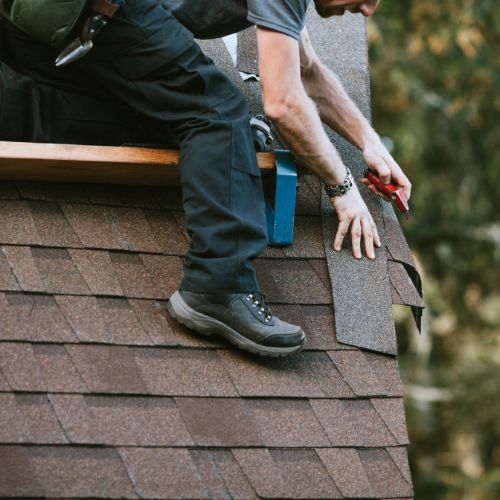How to Start Roofing Shingles
by siteadmin

Shingles protect your home and are one of the most important types of roofing material. Before you can roof, you have to learn how it should be done.
The first step in measuring the area of your roofing is to determine how many bundles you need. This will give you an idea of how many shingles you'll need to cover it.
Layout
Planning the layout and design of your roof is critical, no matter if your building your home yourself or with an experienced builder. It can help to avoid costly errors.
Start by laying a starter sheet that should slightly exceed the drip edge of the eaves. As your guide, you can use a chalkline.
Next, place the regular row of shingles directly above the starter. Mark the spot where the remainder of the regular Shingles will be placed by drawing a horizontal line on the starter course.
Keep going in this same four-step manner as you work up your roof. At every fifth course, start with a complete shingle.
The majority of three-tab-shingles come with alignment slits along the top edges and half-slots along each edge to make it easier for shingles to be aligned. To aid with horizontal alignment, shadow marks might run the length of each single shingle just above the slots.
Nailing
Roofing nails are a type if fastener that attach roof shingles onto the decking. They are usually 12 gauge in thickness and made from hot dip galvanized metal. They are available in various sizes. But they have a characteristic diamond-shaped point which keeps the decking intact if the nail goes through it.
When installing a new roof, it is crucial to choose the right length nails. Consider the shingle thickness as well as decking's thickness.
Starter strip Shingles should be attached 3-4 inches above the shingle's bottom. You should not place nails too high as this can reduce wind resistance. It could cause the adhesive strip's to become loose.
For ridge caps shingles, nail 1/2 inch below the sealant and 12 inches from each end. For dimensionalshingles, nails should be half an inch longer then standard nails. Dimensional shingles are two layers of shingle material, which have been bonded together.
Flashing
Flashing can be used to add an extra layer protection and prevent water from seeping into your home. It is available in many different shapes and can also be hidden beneath the shingles or outside covering.
Flashing is generally used for stopping water from getting into cracks or places where the roof meets walls and any other structural elements like skylights, vent pipes and vent pipes. It prevents water leakage from around door and window openings.
For example, a chimney is covered with a sheet of metal flashing, which wraps around the roof. This flashing creates a watertight seal by interlacing the shingles over the chimney.
Stackpipes, vents, and chimneys all get their flashing. This flashing is applied to tar before the shingle covering. The flashing is located under the lower rows of Shingles, while the upper shingles are covered on the sides.
Shingles
Shingles are a popular, affordable way to protect your house from the elements and enhance its curb appeal. They come in a range of colors and shapes, so you're sure to find the one that fits your roof.
Make sure to follow the manufacturer's instructions for laying your shingles. This will make it easier to place your shingles correctly, and help ensure that your roof remains water-tight and resistant to impact.
To illustrate, before you install shingles around a chimney, cement a flashing protector around it. Once you have clocked the upper half of your chimney, place another flashing apron.
Next bend single tabs, or special ridgeshingles, over the edge. To secure them, place a small amount of asphalt beneath the tabs. Each tab should be attached horizontally and vertically about one inch apart.
https://www.springvalleyroofing.com/
Shingles protect your home and are one of the most important types of roofing material. Before you can roof, you have to learn how it should be done. The first step in measuring the area of your roofing is to determine how many bundles you need. This will give you an idea of how many…
Recent Posts
- New Orleans Concreters Advocates for Stamped Concrete Driveways as the Ultimate Choice for Durability and Style
- Roofers Jacksonville FL: The Premier Choice for Roofing Excellence in Jacksonville
- Gutter Installation Jacksonville FL: Revolutionizing Home Protection
- The Comprehensive Guide to Gutters in Jacksonville FL
- The Comprehensive Guide to Gutters in Jacksonville FL
